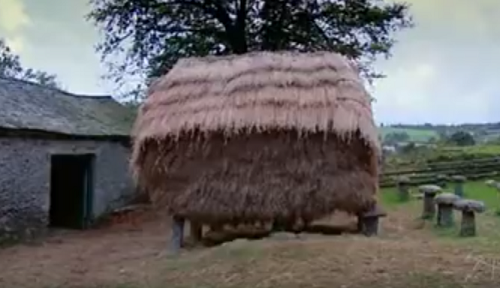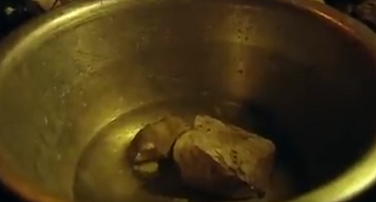Learning from the Past - Living Off-Grid - Edwardian Farm (Part 1)
We recently finished our series on the BBC's show called The Victorian Farm. In the show, a historian (Ruth) and two archaeologists (Peter and Alex) lived on a Victorian-age farm for a whole year. They used only the technology available to the people at the time. If you haven't seen it, I highly recommend it.
Introduction to the Edwardian Farm
Today, we are going to start on the next series put out by the BBC. This new series is called The Edwardian Farm. Once again we join Peter, Alex, and Ruth on a farm. This farm is in a different location in British Isles, and it is an abandoned farm that last functioned during the Edwardian times. Their job is to make this into a functioning farm once again.
In case you are not familiar with British history, the Victorian Age was the end of the 19th century, and the Edwardian age immediately follows it at the start of the 20th century.
The Edwardian Farm - Episode 1
You can find this episode here:
Lesson 1: How to Fix Heavily Acidic Soil

Some soils (like those derived from granite bedrock) are very acidic in nature. This greatly limits the amounts and types of crops that can be grown on that field. The Edwardians (like many others) used quick lime to help neutralize those fields. This is still why we use lime on our fields. Later on in the episode, they will show you how to actually make your own quick lime (see below).
As a side note, it is actually quite amazing how much you actually need to influence the soil pH. In the episode, they recommend using about 2 tons to the acre. And imagine carting that around by horse and buggy, and then using shovels to load it!
Interesting Thing

Edwardian women used to clean and scrub their floors twice a day! And to help keep their dresses clean, they would do it at about 1 square meter at a time.
Another Interesting Thing
Market gardens were a huge thing during the Edwardian period. I guess this is really when people began to produce as much extra produce as they could to sell to others in the city. The train really helped make this happen because produce could be picked and then delivered in the same day.
Lesson 2: How to Clean Out Your Chimney

The Edwardians used 2 different ways to clean out their chimneys. One popular way was to shove a chicken down the chimney. As the chicken scrambles to get free, its claws rip the creosote off of the walls of the chimney.
Thankfully, Alex didn't show us the above method. He actually used a second method. This second popular way to clean a chimney used holly. In case you have not seen holly, the plant retains its leaves at all times during the year, and the leaves are quite hard and spiky. If you bind a few branches together and pull it up your chimney, it will all be clean in a jiffy.
Lesson 3: How to Make Quick Lime

To make quick lime (which turns our has a TON of uses), you need some limestone. Limestone is heated to a constant 900 degrees for 3 days. During this time, you can't really let the temperature drop. In the Edwardian period, they actually had HUGE kilns. These were very deep holes (see above picture) that looked almost like giant wells. Each kiln could hold tons (literally) of limestone.
To get the required heat, they would load the kiln in a very specific way. They would have some kindling in the bottom (the kiln actually had a little opening in the side of the bottom). Then, they would add limestone and coal in alternating layers. They had to be so precise about it that they would count the shovelfuls of each.
Lesson 4: How to Keep Vermin Out of Your Hay

They really came up with an ingenious way of keeping vermin out of their hay. Many people didn't have hay lofts, so they had to store hay outside. In order to reduce the amount lost to rodents, they would stack the hay on top of these structures seen in the above picture. Basically, there are mushroom-shaped stones with a lattice of wooden beams on top. Then the hay was put on. If a rat tried to get the hay, the mushroom would prevent it from being able to climb up.
Yet Another Interesting Fact

They would carve their animal troughs out of granite. However, even more interesting is that it was the prisoners of the local jail that would do it! That is because it took so long to carve out the granite for even a single trough.
Lesson 5: Keeping Water Off of Your Hay

Water greatly reduces the nutritional quality of the hay. Too much water can cause it to mold and be useless. In order to prevent that, the stacks of hay had to be covered. However, this is before the age of plastic tarps. So how did they do it? They would actually build a thatch roof directly on top of the hay stack. The thatch would effectively shed water and keep the hay underneath perfectly dry.
Lesson 6: How to Move Heavy Things

In order to move something heavy and relatively flat on the bottom, you just need to use a few thin logs (probably 4-6 inches in diameter). You put the heavy thing on these logs and then move it forward. As the heavy thing leaves one of the logs, you put that log in front of all the others. Pretty handy!
Lesson 7: How to Tell When Your Quick Lime is Finished

Quick lime reacts very violently with any sort of moisture. This includes moisture on your skin, so you need to be careful when handling this stuff. However, because of this property, you can test if the limestone has turned into quick lime by putting it in water. If the stone starts to crack violently and release heat, you have quick lime!
End of Episode 1
Well there you have it! That is the first episode of this 12-part series on the Edwardian Farm. There is a whole lot more to learn, so be sure to check back for the next episode.
Let me know in the comments below if there is anything else in the episode that I missed that you thought was particularly interesting.

Thatched roof for the hay, brilliant! I bet kids would love pitching in to build such a structure too!
I wonder if this is where the notion of breaking rocks as 'hard labor' for convicts comes from.
Thanks great awesome videos. Knowledge is half the battle in homesteading.
Thanks for the comment, but upvoting your own comment on my post is pretty low. Leave the upvoting of comments to me and the other readers.
Wow. Amazing how many tricks they had.
That quick-line trick: did they have to repeat it or was the soil's pH lowered permanently?